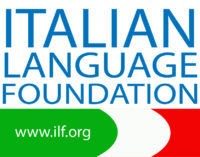Author of over thirty traditionally-published books for young readers, Margo Sorenson spent the first seven years of her life in Spain and Italy, devouring books and Italian food and still speaks (or tries!) her childhood languages. Her most recent Adult/Young Adult novel, SECRETS IN TRANSLATION (Fitzroy Books, October 2018), takes place in Positano, with heroine Alessandra, whose being able to speak Italian helps her to feel at home in Italy, once again. For more information on ordering these and Margo’s other books, please visit www.margosorenson.com

Since early childhood, I’ve been awed by the power of words and languages to connect people and cultures. I was fortunate to grow up speaking three languages—that scenario isn’t that unusual today in our globally-connected world—and, if you happen to be a Diplomatic Service kid, as I was, it’s a given. Because I lived in Spain and Italy for seven years as a child, my early immersion in Spanish and Italian made it normal to think of different words to use for the same concept or object. One of the reasons I became a writer is because of this early fascination with words and their powerful ability to help people communicate and relate to each other, which I experienced every day as a child. Reading my childhood books in Italian and Spanish prompted me to broaden my horizons and to enjoy imaginary worlds; wanting to try to create for young readers what those authors had created for me was another motive for my becoming a writer. Because my early years in Italy left an indelible—and precious—mark on me, it was only natural to incorporate la bella Italia, its culture, and its cuisine in some of my books. It’s been a special way of “coming home.”
For example, in my middle grade novel, FUNNY MAN, high school football player/comedian-wannabe Derrick needs to pay for football camp, so he gets a job at the Taste of Italy. Derrick figures out a creative way to help owner Joe bring more customers into the restaurant, a win-win for everyone, and I thoroughly enjoyed being able to use Italian words and write about Italian cuisine in the story.

In my picture book, SPAGHETTI SMILES, Jake must find a new neighbor for his Uncle Rocco’s crazy, mixed-up Italian restaurant, but it won’t be easy! Being able to write whimsically about Italian food and family was a lots of fun, and young readers giggle at illustrator David Harrington’s flying lasagne squares and tomato sauce being pumped into cars.
My Adult/Young Adult novel set in Positano, SECRETS IN TRANSLATION, asks this question: “What seventeen-year old girl wouldn’t want to return to Italy and meet a handsome, young, Italian university student? For Alessandra, the answer is more complicated—and dangerous.” While I was writing the novel, I loved “transporting” myself back to Italy and being able to use the Italian language and customs I had grown up with. It is the “book of my heart.” Our Italian friends were a great help in writing this book.
My love of words also prompted me to write my picture book, CALVIN GETS THE LAST WORD, in which Calvin tries to find the perfect word to describe his super-annoying older brother, and illustrator Mike Deas creates hilarity on every page with his wonderful illustrations. The words are all in English, but, Calvin could be Italian.
Il cuore é italiano—and yours could be, too, as you connect with others through Italian language study. I encourage everyone to keep up language studies—you never know what the future could bring!




SELECTED PRAISE FOR BOOKS:
FUNNY MAN (ages 7-12):
2003 Minnesota Young Adult Book Award finalist
Nominated for YALSA’s 2003 Quick Picks for Reluctant Young Adult Readers
Recommended in Multicultural Review, Editor’s Shelf
SPAGHETTI SMILES (ages 4-8):
“This humorous children’s adventure stars Jake, a boy who loves hanging out at Rocco’s Italian
Restaurant after school. And it’s a sweet story, too, with some good lessons about business and
family.”—Don Oldenburg, The Ambassador, (National Italian American Foundation’s official
magazine)
“Could reading and Italian food be a match made in heaven? Exuberant, playful illustrations
perfectly set the mood of this boisteriously funny picturebook.”–Midwest Book Review
SECRETS IN TRANSLATION (ages 12-adult):
“Utterly charming!”– Allison K. Hill, CEO of the American Booksellers Association
“SECRETS IN TRANSLATION is a perfect mix of travel, culture, romance and mystery!”– Anita
Celucci, Past President Massachusetts Library Association
“A delightful armchair excursion to the romantic heart of southern Italy! Brava!”– Dianne
Hales, Honorary Knight of Italy and author of La Passione: How Italy Seduced the World
CALVIN GETS THE LAST WORD (ages 4-8):
“A featured pick for “picture books about words.” The New York Times Children’s Book Review
“A fun story that promotes vocabulary development and dictionary use. (Picture book. 5-8)”
—Kirkus Reviews




















